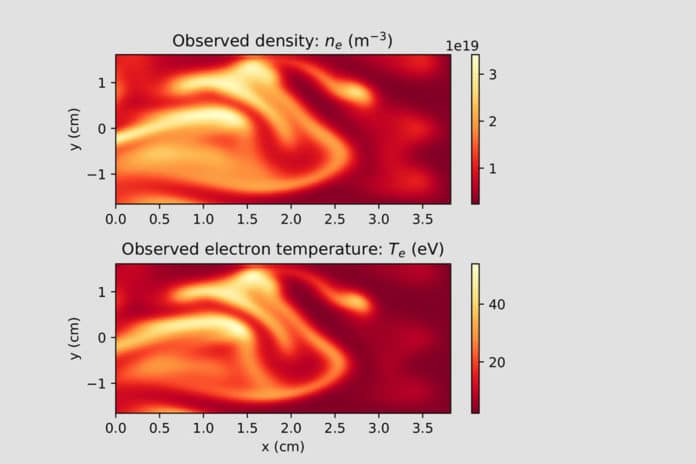Understanding the turbulent motion of plasmas is essential to make fusion energy a viable resource for the world’s energy grid. Magnetic confinement of plasmas is the most highly developed approach to controlled fusion.
Tokamak is a device used in nuclear-fusion research for magnetic confinement of plasma to produce significant gains in net energy. However, this remains a challenge when the hot edge of the plasma (over 1 million degrees Celsius) is just centimeters away from the much cooler solid walls of the vessel.
According to scientists, this plasma edge is the source of numerous unanswered questions.
MIT scientists focus on modeling turbulence boundaries using numerical simulations to understand edge conditions better. This will help them predict the plasma’s behavior.
However, “first principles” simulations are among the most challenging and time-consuming computations in fusion research. With quantified levels of accuracy, faster computer models could accelerate the progress.
For decades, tokamak physicists have relied on reduced “two-fluid theory” to simulate boundary plasmas in an experiment. In two studies, Abhilash Mathews, a Ph.D. candidate in the Department of Nuclear Science and Engineering working at MIT’s Plasma Science and Fusion Center (PSFC), tested the accuracy of this reduced plasma turbulence model in a new way: combining physics with machine learning.
In the first study, Mathews used the deep learning technique to create representations of the reduced fluid theory equations. This framework helped him demonstrate a way to compute the turbulent electric field from an electron pressure fluctuation in the plasma consistent with the reduced fluid theory.
In the second study, Mathews investigates this connection, contrasting it against higher-fidelity turbulence simulations. He found that in plasmas relevant to existing fusion devices, the reduced fluid model’s predicted turbulent fields are consistent with high-fidelity calculations.
Mathews said, “In this sense, the reduced turbulence theory works. But to fully validate it, “one should check every connection between every variable.”
Principal Research Scientist Jerry Hughes said, “Plasma turbulence is notoriously difficult to simulate, more so than the familiar turbulence seen in air and water. This work shows that, under the right set of conditions, physics-informed machine-learning techniques can paint a full picture of the rapidly fluctuating edge plasma, beginning from a limited set of observations. I’m excited to see how we can apply this to new experiments, in which we essentially never observe every quantity we want.”
David Hatch, a research scientist at the Institute for Fusion Studies at the University of Texas at Austin, said, “These physics-informed deep-learning methods pave new ways in testing old theories and expanding what can be observed from new experiments. These applications are the start of a promising new technique.”
“The work is a major achievement with the potential for broad application. For example, given limited diagnostic measurements of a specific plasma quantity, physics-informed machine learning could infer additional plasma quantities in a nearby domain, thereby augmenting the information provided by a given diagnostic. The technique also opens new strategies for model validation.”
Mathews said, “Translating these techniques into fusion experiments for real edge plasmas is one goal we have insight into, and work is currently underway,” he says. “But this is just the beginning.”
Journal References:
- A. Mathews et al. Uncovering turbulent plasma dynamics via deep learning from partial observations. DOI: 10.1103/PhysRevE.104.0252
- A. Mathews et al. Turbulent field fluctuations in gyrokinetic and fluid plasmas. DOI: 10.1063/5.0066064
